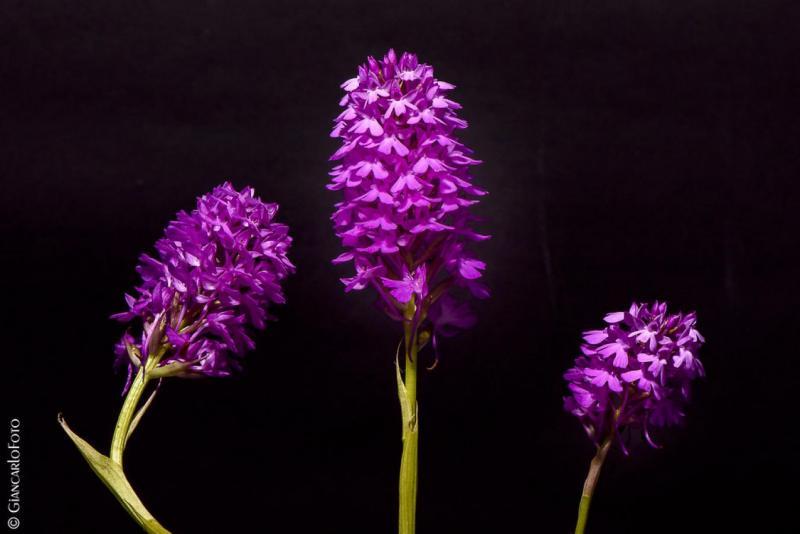Anacamptis pyramidalis
Also known as: The Pyramid Anacamptis or Orchis appendiculata Orchis condensata Orchis pyramidalis var. sanguinea Orchis cylindrica Orchis brachystachys Orchis pyramidalis var. sommieriana Orchis pyramidalis var. urvilleana Aceras pyramidale Anacamptis pyramidalis f. nivea Anacamptis pyramidalis ssp. urvilleana Anacamptis pyramidalis f. longispica Anacamptis durandii Anacamptis pyramidalis var. nivea Anacamptis condensata Anacamptis brachystachys Anacamptis pyramidalis var. urvilleana Anacamptis pyramidalis var. sanguinea Anacamptis pyramidalis ssp. serotina Anacamptis pyramidalis f. tanayensis Anacamptis pyramidalis ssp. tanayensis Anacamptis pyramidalis f. serotina Anacamptis pyramidalis var. tanayensis Anacamptis urvilleana Anacamptis pyramidalis f. sanguinea Anacamptis pyramidalis var. brachystachys Anacamptis pyramidalis f. angistiloba Anacamptis pyramidalis f. fumeauxiana Anacamptis pyramidalis f. apiculata Anacamptis pyramidalis ssp. algarbiensis Anacamptis pyramidalis ssp. brachystachys Anacamptis pyramidalis lusus albiflora Anacamptis pyramidalis ssp. condensata Anacamptis pyramidalis f. condensata Anacamptis pyramidalis var. condensata Anacamptis pyramidalis var. dunensis Anacamptis pyramidalis var. cerigensis Anacamptis pyramidalis var. serotina Anacamptis pyramidalis lusus carnea Aceras pyramidale var. brachystachys Anacamptis pyramidalis subvar. albiflora Anacamptis pyramidalis var. pyramidalis Anacamptis pyramidalis var. orientalis Anacamptis pyramidalis ssp. cerigensis Anacamptis pyramidalis f. platycheila in the subfamily: Orchidoideae
General Information
The Pyramid Anacamptis is a small to medium sized cold to cool growing terrestrial orchid belonging to the sub family Orchidoideae.
Plant Description
Each new growth has numerous erect lance shaped, oblong shaped leaves
Flowers
Numerous fragrant blossoms appear during Summer
Fragrance
The orchid is fragrant. The fragrance can be described as musky
Blooming Season
- Summer
Care Notes
These orchids grow on the forest floor so are used to rich soil containing plenty of organic matter that is always moist (but not always wet), and prefer constant conditions in terms of humidity, temperature and water supply. They may not be as forgiving as epiphytes in regards to sudden changes in growing conditions so it is wise to ease them into new conditions over a the space of a few days, and repot as infrequently as possible.
Keep an eye on the plants condition regularly as they can decline suddenly if the conditions are not just right. It is more important to keep water supply constant rather than frequent - overwatering often causes rot which can quickly set in, especially in warmer conditions.
These can be grown in shady, moist areas in the garden, supplied they have protection from abrupt changes caused by the elements, e.g. dry winds, frost etc. Being grown around companion plants such as ferns and bromeliads will help build and retain the humidity they require throughout the year.
Fragrant:- IsFragrant
Fertiliser
These plants do well with slow release fertiliser at the rate of 2-3 pellets per cup (250ml) of media. Additional fertiliser during the growth period may be beneficial, but not necessary.
Potting
These plants can be sensitive to repotting though should not require repotting regularly. Repotting should be done when the mix has broken down to the point that it doesn't absorb water or holds onto water for far too long, usually the plant shows a decline in growth as well. Repotting is best done after the growing season when the plant has died back.
The mix should be free draining, with a blend of 30% inorganic ingredients such as coarse sand, gravel or perlite, mixed in with about 70% organic ingredients such as peat, leaf litter or decomposed bark. Avoid commercial potting mixes as they can vary wildly and may contain "wetting agents" that can hold onto water for loo long, causing rotting and stunted growth.



















